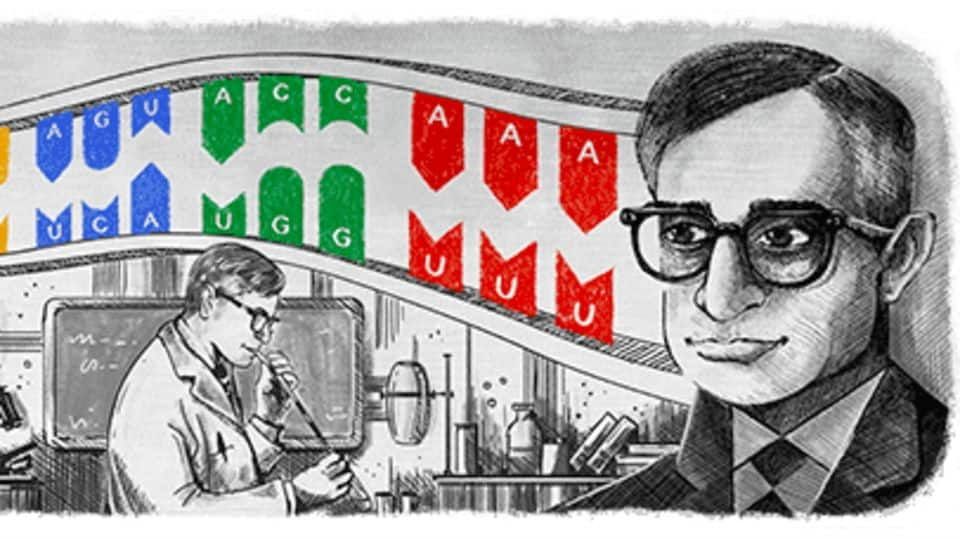
Remembering Noble prize-winner Har Gobind Khorana on 96th birth-anniversary
What's the story
Though the actual birthdate of Nobel laureate Har Gobind Khorana is unknown, according to his official documents, he would have turned 96 today. To honor the renowned biochemist, Google has changed its logo in 13 countries to a doodle of him and his work. It's been created by Bengaluru-based illustrator Rohan Dahotre. Here's all about the scientist who built the first synthetic gene.
Profile
Who is Har Gobind Khorana?
Much of our understanding of how genes build us is Khorana's work. An expert on the chemical synthesis of nucleic acids/proteins, he shared the Nobel Prize in physiology/medicine in 1968 with Robert Holley and Marshall Nirenberg. Though they worked independently, they were the first to find out that DNA stores information, which transcribes into RNA, and then translates into the language of proteins.
Personal life
Khorana was married to Swiss national Esther Elizabeth Sibler
Khorana was the fifth child born in 1922 to the only literate family in Raipur, a 100-person village in the Punjab region, which is now in Pakistan. He married Swiss national Esther Elizabeth Sibler, who is often praised for giving him a consistent sense of purpose. She died in 2001. Khorana died on November 9, 2011 in Concord, Massachusetts. He was 89.
Education
He was an alumnus of Pakistan's Punjab University
He learnt to read and write from his father. Various scholarships funded his pursuits of higher education. He earned his undergraduate and master's degrees in chemistry at Punjab University. Backed by a scholarship from the Indian government, he went on to do a PhD in organic chemistry from the University of Liverpool in the UK, which he completed in 1948.
Work
He worked in Switzerland, Canada and the US
Khorana conducted extensive multidisciplinary research across the fields of chemistry, biology, and physics at a time when it was unheard of. In his stellar career, he has worked in research institutions in Switzerland and Canada before joining the Institute for Enzyme Research and the University of Wisconsin, Madison. It was there that he worked on his breakthrough research for which he received the Nobel.
Little-known facts
Khorana's student Michael Smith received the 1993 Chemistry Nobel Prize
Khorana had three children. His daughter Emily died in 1979. He is now survived by the other two, Julia and Dave. One of his students, Michael Smith, received the 1993 Nobel Prize in Chemistry for creating artificial mutations in DNA. Khorana became an American citizen in 1966 and MIT's faculty member in 1970. He retired in 2007.